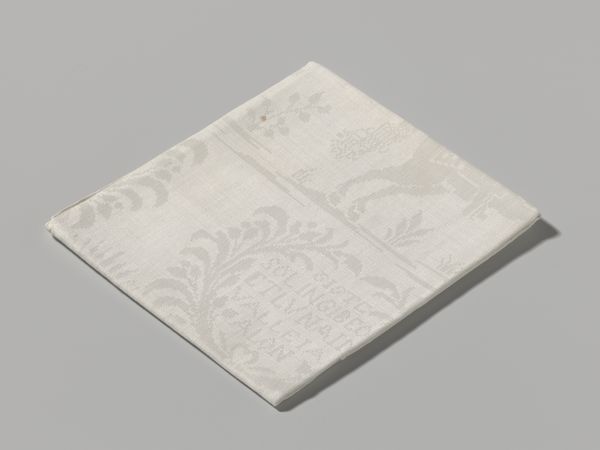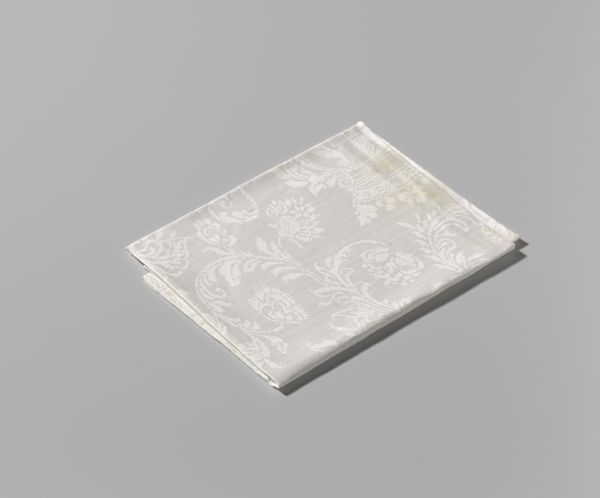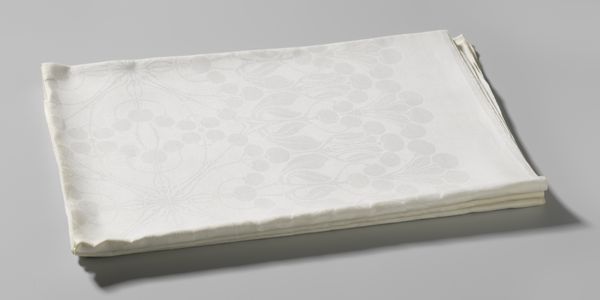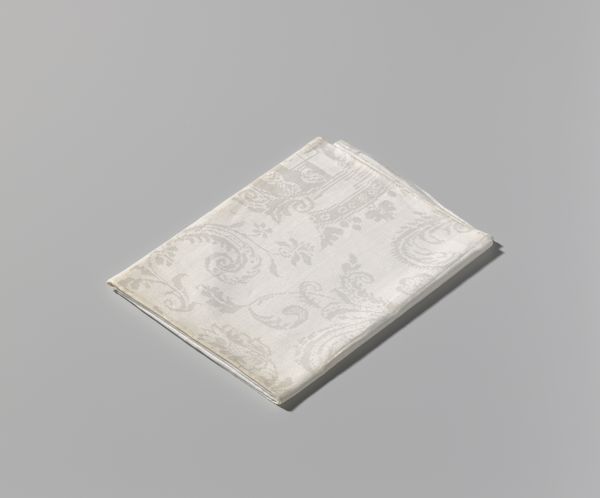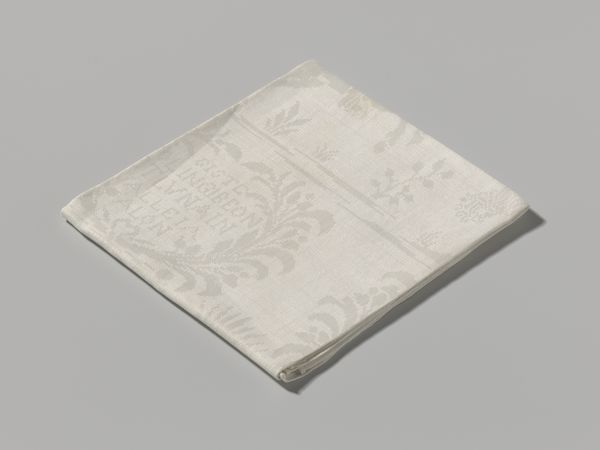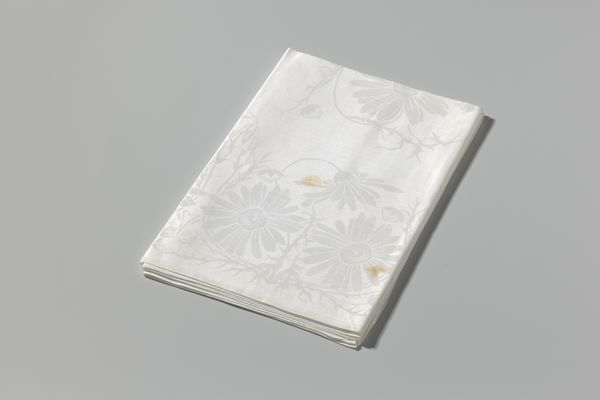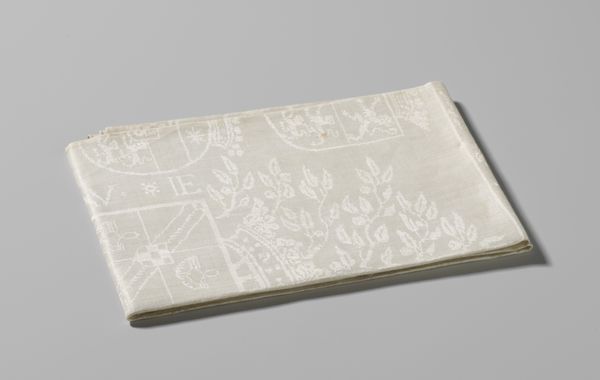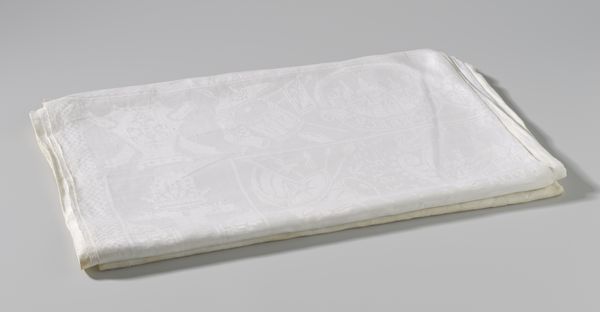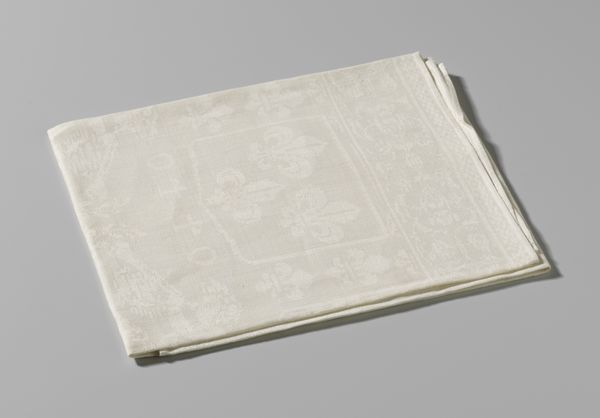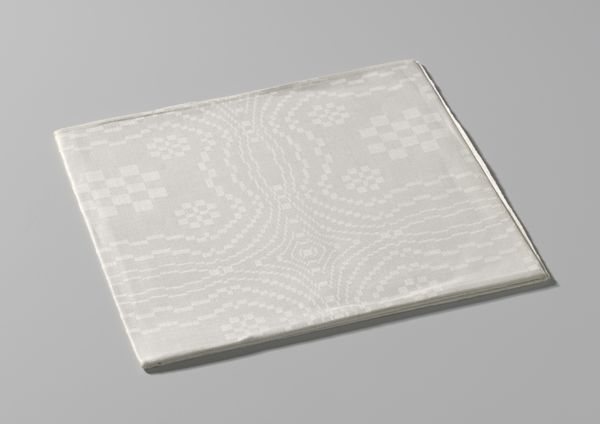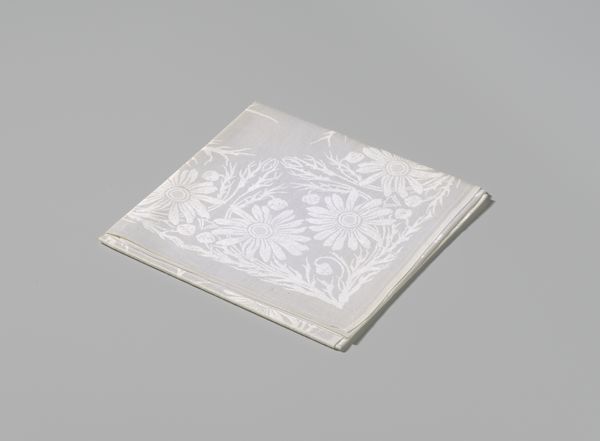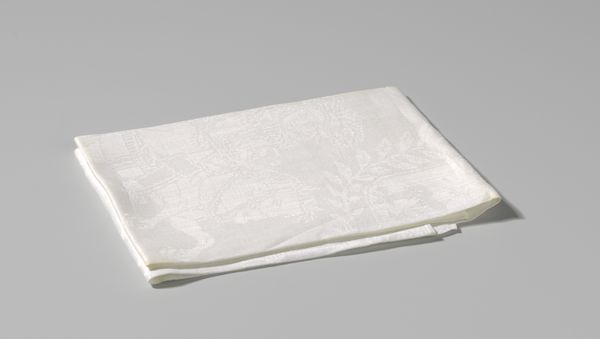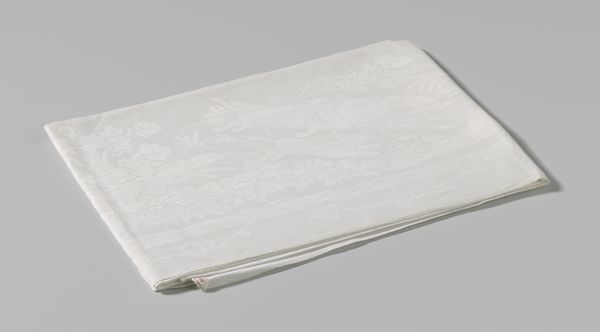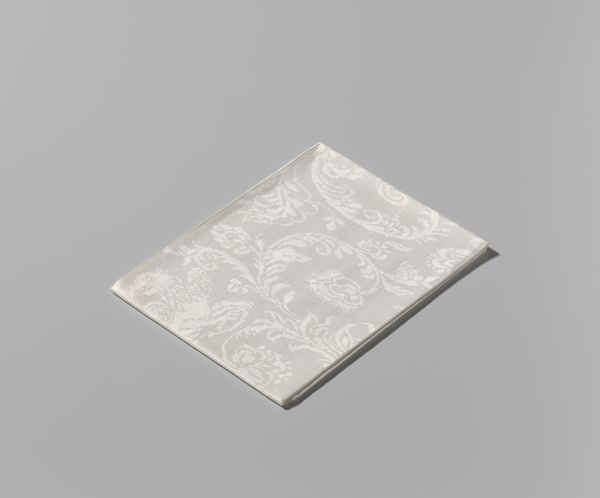
textile
#
textile
#
decorative-art
Dimensions: height 111.0 cm, width 174.0 cm
Copyright: Rijks Museum: Open Domain
Curator: Here we have “Tafellaken,” a decorative textile produced sometime between 1850 and 1900 by the firm De Leeuw. Editor: It's deceptively simple at first glance, isn't it? Just an off-white cloth folded on a neutral surface. But the subtle floral damask elevates it. It gives off an air of restrained elegance and almost…ghostly domesticity. Curator: I agree. Objects such as this give insight into the rise of industry and manufacturing culture, showcasing textiles produced for bourgeois households. A table linen signifies order, cleanliness, and a specific form of social display, right? Editor: Precisely! A seemingly innocent piece like this table linen reveals much about class and social standing, think of its use as a stage for the performance of family life, gender roles and national identity. The very act of setting a table is a deeply symbolic act that has historically been regulated by custom, manuals and etiquette. Curator: You make an important point about performativity. And thinking about the materiality, the specific floral damask could point us toward aesthetic trends of the period. Editor: Definitely. Motifs can echo sociopolitical statements through pattern and surface design. These florals may reference then-popular symbols of prosperity or imperial power; it would be revealing to delve deeper into the meanings encoded within those specific flower types. Curator: This points toward a conversation around colonial expansion too. How objects like these were traded across regions, potentially at the expense of labor and resources in colonized lands. Editor: Indeed. It makes you ponder the ethics of displaying domestic items from that era outside that very context, the ghosts present or absent. A plain piece of cloth quickly morphs into a loaded object when you tease out such narratives! Curator: Thank you! By understanding these dynamics, we can re-evaluate and expand our appreciation for not just aesthetics but also cultural significance. Editor: Exactly. This piece, so simple on the surface, encourages us to unravel historical threads of empire, class, and design sensibilities.
Comments
No comments
Be the first to comment and join the conversation on the ultimate creative platform.
